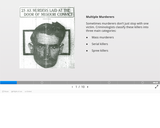
Multiple Murderers, Mass Murderers Slideshow
- Subject:
- Career and Technical Education
- Criminal Justice
- Material Type:
- Interactive
- Provider:
- Michigan Virtual
- Date Added:
- 07/29/2019

Multiple Murderers, Mass Murderers Slideshow
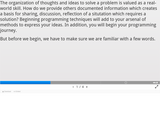
3 slide course presentation
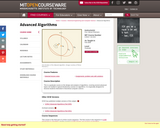
" This is a graduate course on the design and analysis of algorithms, covering several advanced topics not studied in typical introductory courses on algorithms. It is especially designed for doctoral students interested in theoretical computer science."
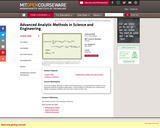
A comprehensive treatment of the advanced methods of applied mathematics. Designed to strengthen the mathematical abilities of graduate students and train them to think on their own. Review of elementary methods in complex analysis, ordinary differential equations, and partial differential equations. Expansions around regular and irregular singular points; asymptotic evaluation of integrals, regular perturbations; WKB method; multiple scale method; boundary-layer techniques.
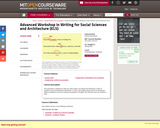
Advanced subject focusing on techniques, format, and prose style used in academic and professional life. Emphasis on writing as required in fields such as economics, political science, and architecture. Short assignments include: business letters, memos, and proposals that lead toward a written term project. Methods designed to deal with the special problems of those whose first language is not English. Successful completion satisfies Phase II of the Writing Requirement. This workshop is designed to help you write clearly, accurately and effectively in both an academic and a professional environment. In class, we analyze various forms of writing and address problems common to advanced speakers of English. We will often read one another's work.
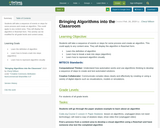
Students will take a sequence of events or steps for some process and create an algorithm. This could apply to any content area. They will display the algorithm in flowchart form. This activity can be modified for all grade levels and content areas.
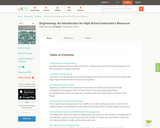
Introduces engineering techniques and practices to high school students. The nature of engineering and it's societal impact are covered, as well as the educational and legal requirements needed to become an engineer. This book is designed for a broad range of student abilities and does not require significant math or science prerequisites.
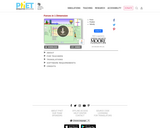
Explore the forces at work when you try to push a filing cabinet. Create an applied force and see the resulting friction force and total force acting on the cabinet. Charts show the forces, position, velocity, and acceleration vs. time. View a Free Body Diagram of all the forces (including gravitational and normal forces).
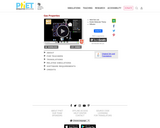
Pump gas molecules to a box and see what happens as you change the volume, add or remove heat, change gravity, and more. Measure the temperature and pressure, and discover how the properties of the gas vary in relation to each other.

Introduction to coding using block based programming

Make sparks fly with John Travoltage. Wiggle Johnnie's foot and he picks up charges from the carpet. Bring his hand close to the door knob and get rid of the excess charge.

In this lesson students will see the different types of evidence scientists use to understand evolutionary relationships among organisms. They will first practice by using shared physical characteristics to predict relationships among members of the cat family and then use this approach to predict primate relationships. They will compare their predictions to evidence provided by analyzing amino acid sequences and build a phylogenetic tree based on these sequences. Finally, they will look at the tree in the context of time in order to see divergence times.

Learn about position, velocity, and acceleration graphs. Move the little man back and forth with the mouse and plot his motion. Set the position, velocity, or acceleration and let the simulation move the man for you.
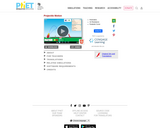
Blast a Buick out of a cannon! Learn about projectile motion by firing various objects. Set the angle, initial speed, and mass. Add air resistance. Make a game out of this simulation by trying to hit a target.
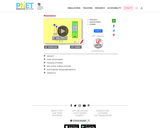
For advanced undergraduate students: Observe resonance in a collection of driven, damped harmonic oscillators. Vary the driving frequency and amplitude, the damping constant, and the mass and spring constant of each resonator. Notice the long-lived transients when damping is small, and observe the phase change for resonators above and below resonance.
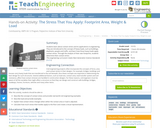
Students learn about contact stress and its applications in engineering. They are introduced to the concept of heavy loads, such as buildings, elephants, people and traffic, and learn how those heavy loads apply contact stress. Through the analysis of their own footprints, students determine their contact stress.